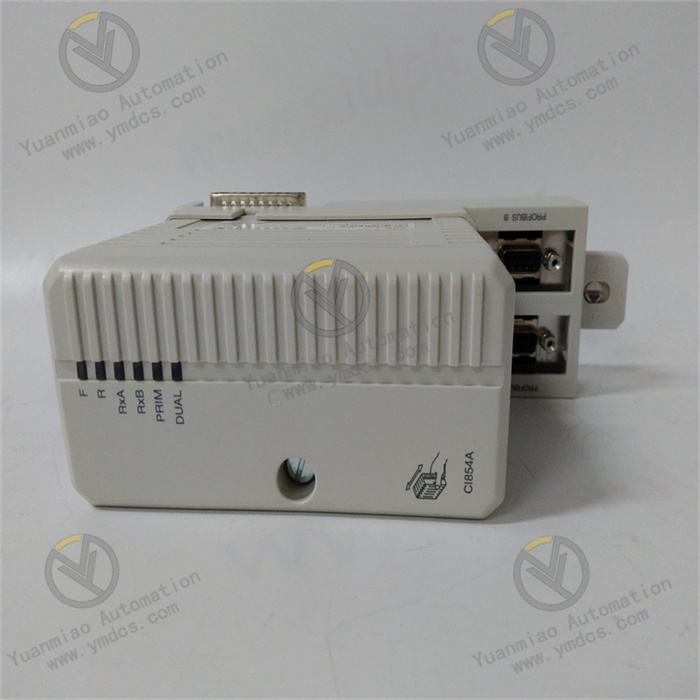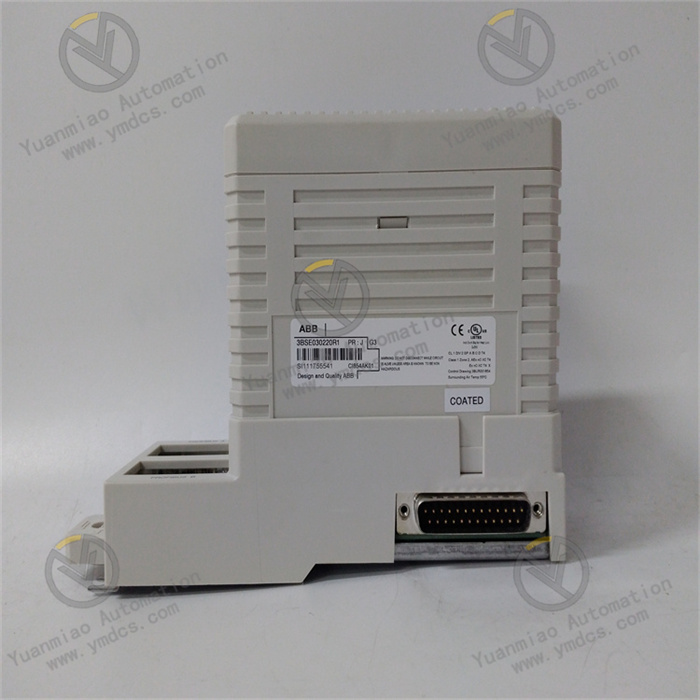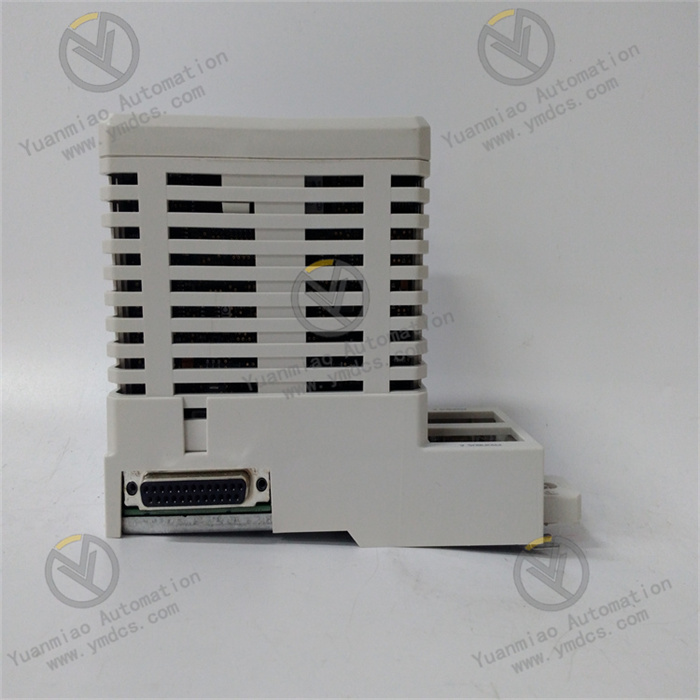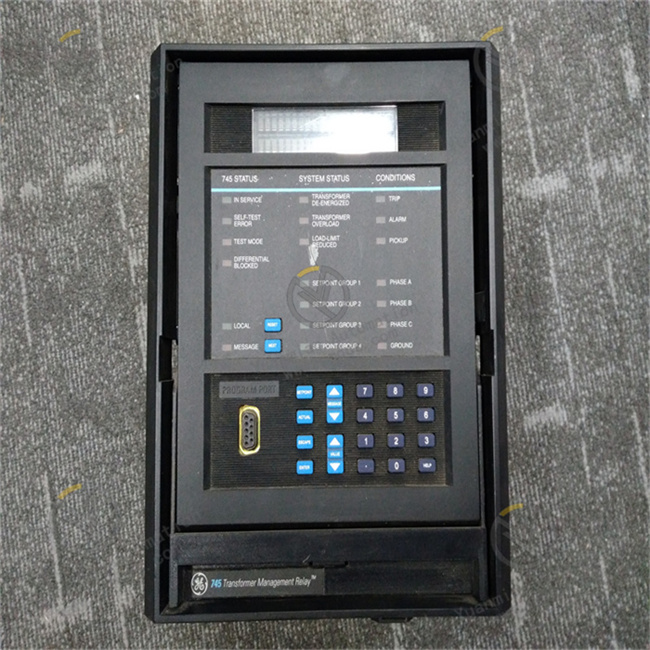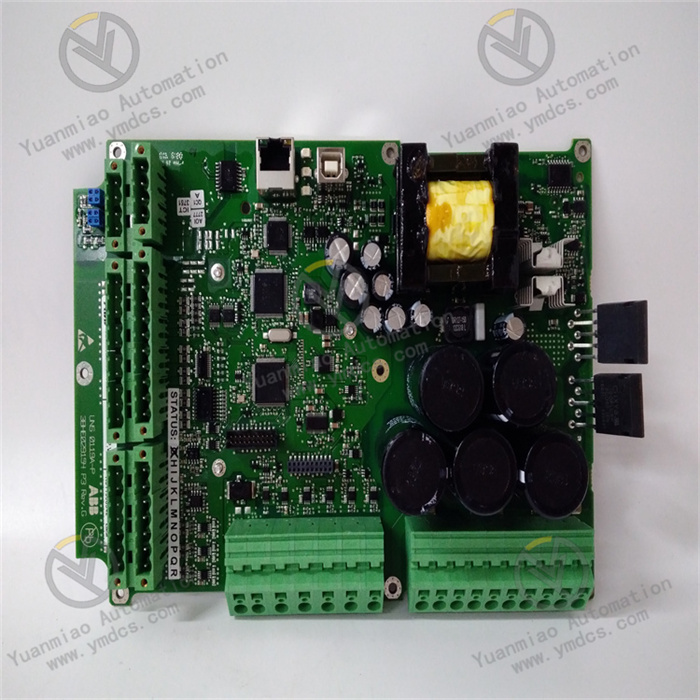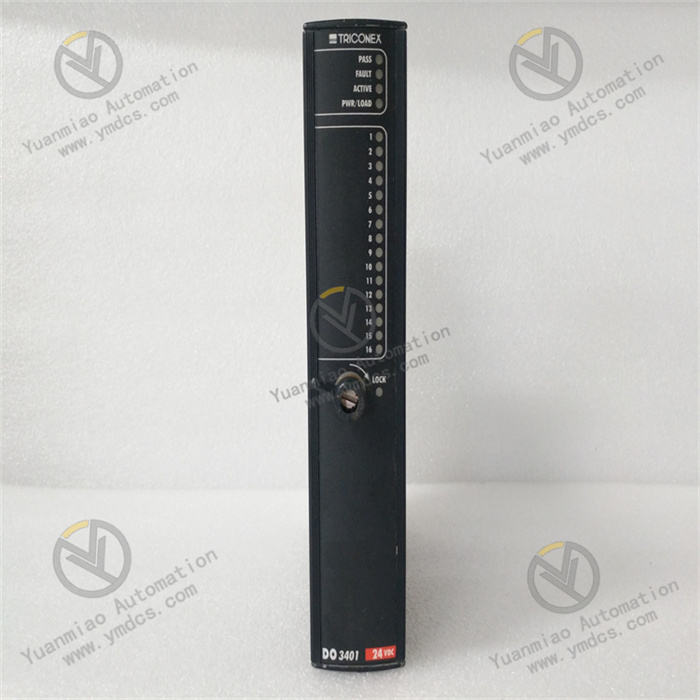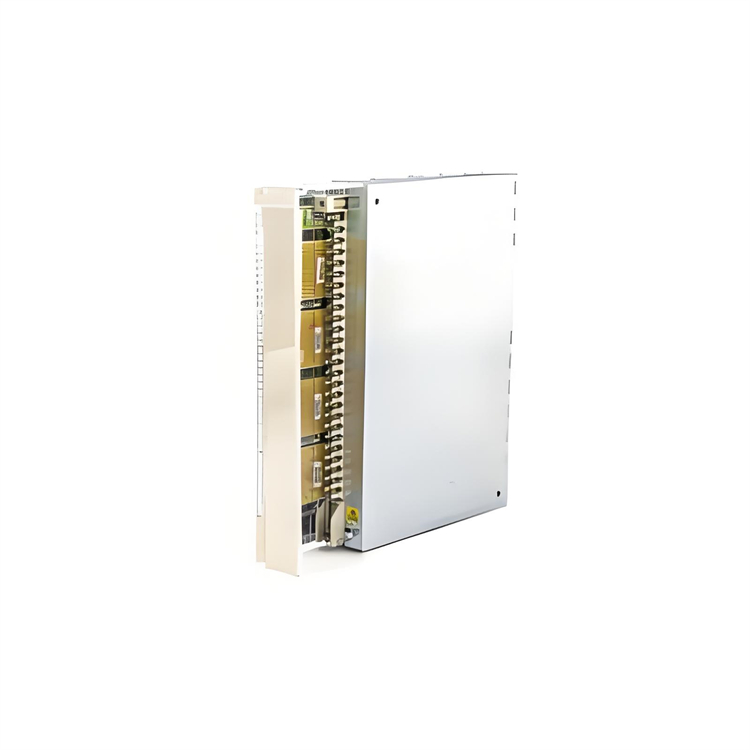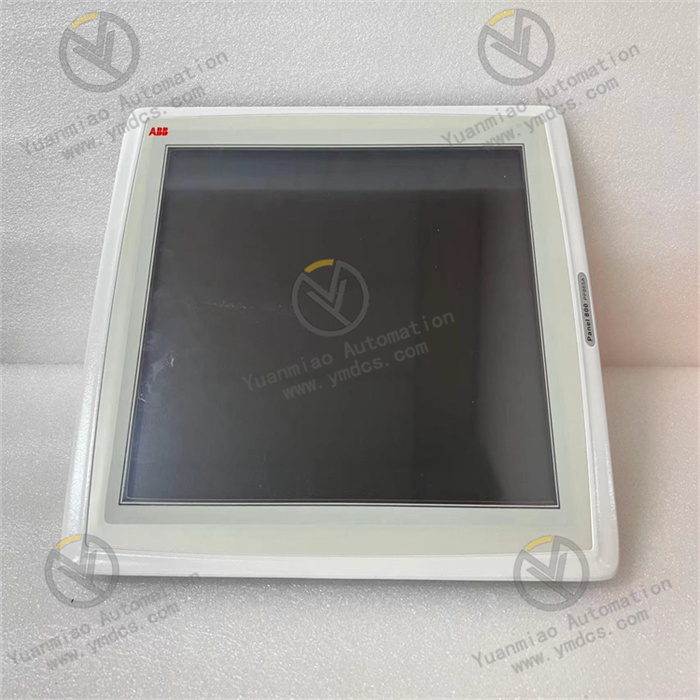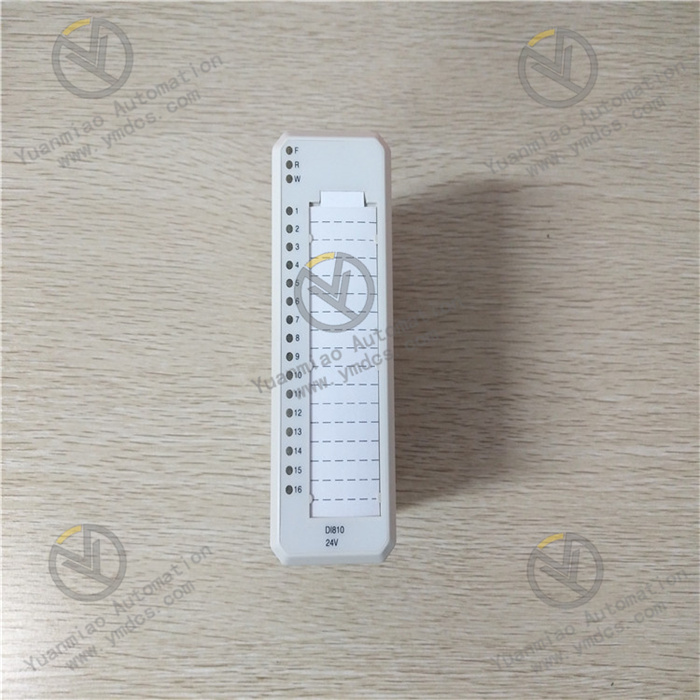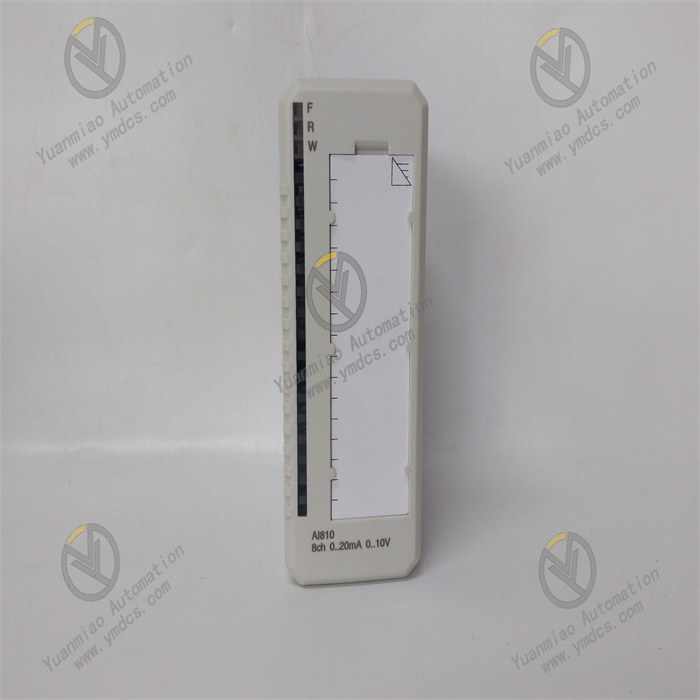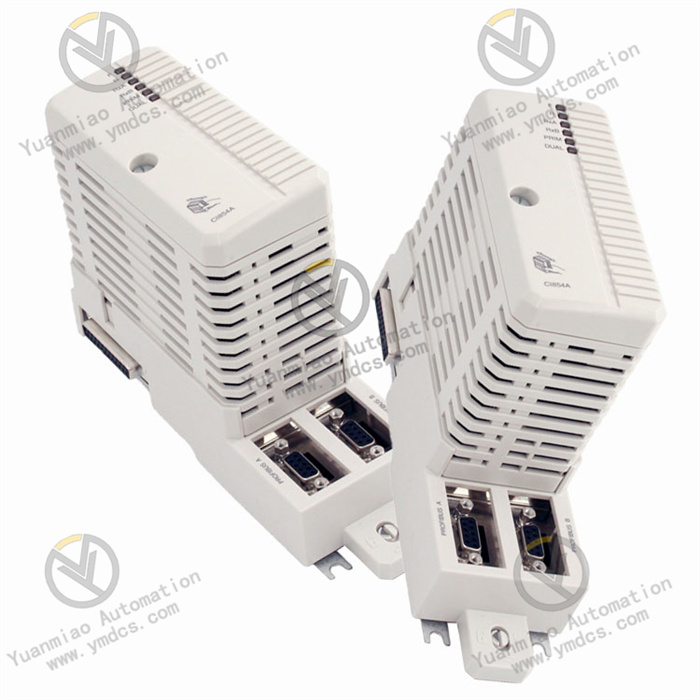Description
ABB CI854AK01 3BSE030220R1
I. Basic Product Information
Series: ABB Control Builder M series, an industrial automation control system communication interface module.
Core Functions: As a fieldbus interface module, it connects control systems with field devices (e.g., sensors, actuators) and supports multiple communication protocols (e.g., PROFIBUS DP, Modbus) to enable real-time data transmission and control.
Application Scenarios: Widely used in automation control systems across industrial sectors such as power, chemical, metallurgy, and pharmaceuticals, especially in scenarios requiring high-reliability and real-time communication.
Core Functions: As a fieldbus interface module, it connects control systems with field devices (e.g., sensors, actuators) and supports multiple communication protocols (e.g., PROFIBUS DP, Modbus) to enable real-time data transmission and control.
Application Scenarios: Widely used in automation control systems across industrial sectors such as power, chemical, metallurgy, and pharmaceuticals, especially in scenarios requiring high-reliability and real-time communication.
II. Technical Parameters
| Parameter Category | Detailed Information |
|---|---|
| Communication Protocols | Supports PROFIBUS DP V1/V2, Modbus RTU/ASCII, CANopen, etc. (specific to configuration). |
| Interface Types | - Physical interfaces: DB9 serial port, PROFIBUS bus interface - Electrical characteristics: Compliant with RS-485/RS-232 standards. |
| Data Transmission Rate | Up to 12 Mbps (PROFIBUS DP mode); 19.2 kbps to 115.2 kbps in Modbus mode. |
| I/O Channels | Typically bidirectional communication, supporting multiple slave connections (number of slaves depends on bus load). |
| Power Supply | DC 24 V (±10%), power consumption approx. 5 W. |
| Operating Temperature | -40°C to +70°C (industrial-grade wide-temperature design). |
| Protection Level | IP20 (suitable for installation in control cabinets). |
| Certification Standards | Compliant with international certifications such as CE, UL, CSA, and industrial EMC standards. |
III. Product Features and Advantages
High Compatibility
- Supports multiple mainstream industrial communication protocols, flexibly adapting to field devices from different manufacturers and reducing system integration complexity.
Reliability Design
- Features hardware watchdog, signal isolation (electrical isolation up to 2500 Vrms), and anti-interference capabilities, suitable for harsh industrial environments.
- Supports redundant configurations (e.g., dual bus interfaces) to enhance system availability.
Convenient Configuration and Maintenance
- Parameter configuration and diagnostics via ABB Control Builder M software, supporting online programming and firmware upgrades.
- Module equipped with status indicator lights (e.g., power, communication, fault lights) for quick anomaly localization.
High-Performance Data Processing
- Built-in high-performance microprocessor supports real-time data exchange and protocol conversion with latency as low as millisecond levels.
Fault Diagnosis and Troubleshooting for ABB CI854AK01 3BSE030220R1 Module
I. Preliminary Hardware Status Check
1. Module Indicator Diagnosis
The CI854AK01 module typically features status indicator lights (LEDs), through which fault locations can be quickly identified by color and flashing patterns:
| Indicator | Normal Status | Abnormal Status and Possible Causes |
|---|---|---|
| PWR (Power) | Green, steady on | - Off: Power not connected or module power failure - Flashing: Unstable power voltage |
| RUN (Operation) | Green, periodic flashing | - Steady on/off: Module initialization failure or firmware fault - Rapid flashing: Firmware upgrade in progress |
| COM (Communication) | Green, steady on or flashing | - Off: No communication signal - Red: Communication link fault (e.g., cable break, address conflict) |
| ERR (Error) | Off | - Red, steady on: Module hardware fault (e.g., chip damage, internal circuit issues) - Flashing: Communication error or configuration anomaly |
| BUS (Bus) | Green, steady on (master) | - Off: PROFIBUS bus not activated - Red: Bus short circuit, grounding fault, or slave failure |
Operation Recommendations:
- Record the status of abnormal indicators, power off and reinsert the module (check for good contact). If the fault persists, replace with an identical module for testing.
2. Physical Appearance Inspection
- Check the module for physical damage such as burn marks, deformation, or oxidation in the socket.
- Verify that the PROFIBUS bus connector is secure and that the terminal resistor is correctly set (master stations typically require terminal resistors to be enabled, while slave stations disable them).
- Ensure the cable shield is well-grounded to avoid electromagnetic interference.
II. System Software Diagnosis
1. View System Logs and Error Codes
- Read module diagnostic information via ABB Control Builder M or Control Panel software:
- Error codes: e.g., "BUS ERROR" (bus error), "SLAVE NOT RESPONDING" (slave unresponsive), etc.
- Event logs: Record fault occurrence time, type, and possible causes (e.g., timeout, parity error).
2. Configuration Parameter Verification
- Confirm that the module’s PROFIBUS address setting matches the software configuration (address range: 0–126, master station typically 0).
- Check that the communication rate (baud rate) and protocol type (DP-V0/V1) match the slave device.
- Verify that the slave device list is correctly imported and matches the actual number and models of connected slaves.
3. Firmware Version Check
- A firmware version that is too low may cause compatibility issues. Check the firmware version of the module through software. If it is lower than the officially recommended version, upgrade according to the following steps:
- Download the latest firmware to the programming device.
- Power off the module and enter firmware upgrade mode via Control Builder M.
- Complete the upgrade as prompted, avoiding power interruptions.
III. Communication Fault Troubleshooting
1. Bus Signal Testing
- Use a PROFIBUS diagnostic tool (e.g., Fluke DP tester) to measure bus voltage:
- No-load voltage should be approximately 12V (with terminal resistor enabled).
- Loaded voltage should not be lower than 9V. Abnormal voltage may indicate bus short circuit, terminal resistor not enabled, or slave failure.
2. Segmented Isolation Method to Locate Fault Points
- Disconnect the bus at the midpoint and connect slaves segment by segment while observing module status:
- If the module reports an error after connecting a segment, the fault lies within the slaves or cables in that segment.
- Focus on checking power supply, address conflicts, and bus connector contact in the faulty segment.
3. Replacement Method Verification
- Replace PROFIBUS cables or connectors to rule out physical link faults.
- Replace the current slave device with a known-good one to test if the module recovers normal operation, distinguishing between module and slave faults.
IV. Common Faults and Solutions
| Fault Phenomenon | Possible Causes | Solutions |
|---|---|---|
| Module without power (PWR light off) | - Power module failure - Power supply cable open - Module power interface damage | - Check power module output - Replace power supply cable - Repair or replace module |
| Communication 中断 (COM light off) | - Bus cable damage - Address conflict - Slave power loss - Electromagnetic interference | - Test cable continuity - Check slave addresses - Restore slave power supply - Optimize cable routing and enhance shielding |
| Frequent error reports (ERR light flashing) | - Configuration parameter errors - Firmware defects - Slave communication protocol incompatibility | - Recheck parameters - Upgrade firmware - Update slave GSD files or replace with compatible devices |
| Module overheating (hot casing) | - Poor ventilation in the installation environment - Aging internal components | - Improve heat dissipation conditions - Replace the module |
| Slave device unrecognized | - Incorrect slave configuration - Bus terminal resistor not enabled - Slave hardware failure | - Import correct slave description files - Enable terminal resistors - Replace slave devices |

V. Maintenance and Preventive Measures
Regular Inspections:
- Clean module cooling vents quarterly to prevent overheating due to dust accumulation.
- Check cable connectors for looseness and retighten as needed.
Redundancy Configuration:
- If supported by the system, configure dual bus redundancy or hot standby modules to reduce single-point failure risks.
Document Management:
- Save module firmware versions, configuration parameters, and slave GSD files for quick recovery during faults.
Training and Spare Parts:
- Train maintenance personnel on PROFIBUS communication principles and module diagnostics.
- Stock common spare parts (e.g., modules, connectors, terminal resistors) to reduce fault handling time.


